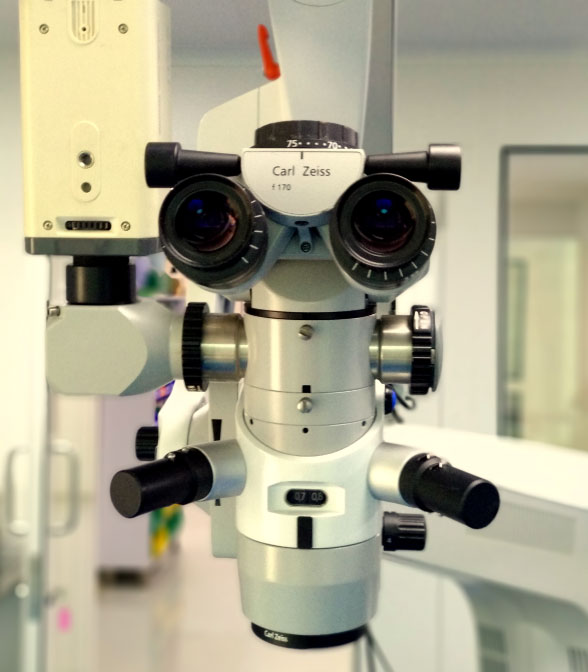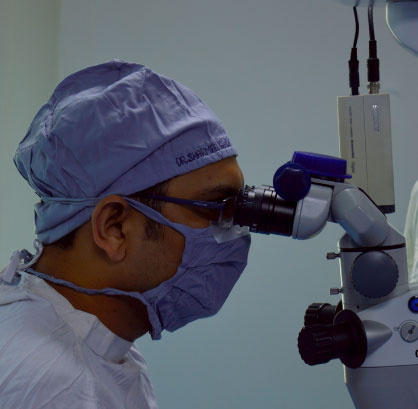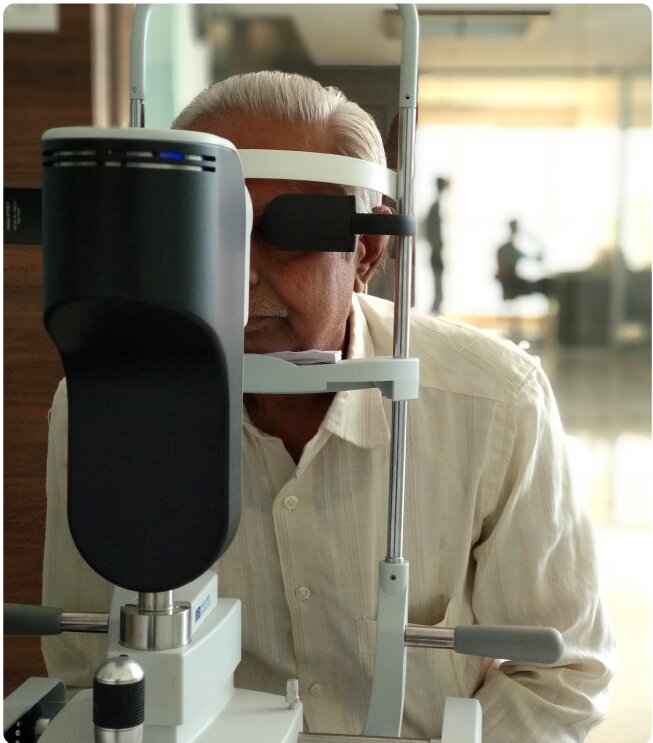Cataract Surgery Hospital in Ahmedabad



A cataract is a common disease that affects the lens of our eye. Just like the lens of a regular camera, the human lens also focusses light on the retina. Generally, the human eye lens contains water and soluble proteins arranged in a specific pattern to make the eye lens transparent.

This transparent nature enables the light to pass through and focus on the retina, picked up by the optic nerve to form an image of what we see daily. As we grow old, our eye lens gets clouded when the proteins start clumping together; this is known as Cataract.
Besides aging, Cataracts can develop from an eye injury, from previous eye surgery, or if you have taken certain medications.
In an eye with a cataract, instead of focusing precisely on the retina, the light scatters throughout the eye. This results in blurry vision, sensitivity to bright lights, glare, etc. As the disease progresses, it leads to a painless, progressive decrease in our vision quality, ultimately resulting in a poor quality of life, constantly interfering with our day-to-day activities like driving, reading, and other regular work.
Cataracts can be treated easily with a simple surgery under local anesthesia, where this clouded lens will be replaced with a new high-quality man-made lens.

At S.R.G. Eye Hospital, we use an advanced cataract surgery technique called hacoemulsification or "Phaco," where a new premium quality lens is placed through a small incision in the cornea.

Did you know?
People who develop a cataract in the centre of their lens sometimes notice a temporary improvement near vision called second sight, which eventually fades out as the Cataract progresses!
Who is at a Risk of Cataract?
- People above the age of 50 years as their eye muscles get weaker.
- People with problems of Obesity.
- Individuals with Hypertension.
- Over-exposure to harmful U.V. rays from the sun.
- Individuals with Eye injuries.
- Individuals with a history of eye diseases in the family.
- People with auto-immune diseases like Diabetes.
- Poor choice of lifestyle habits such as prolonged use of Steroids, Alcohol or smoking abuse.
Surgery Duration and Post Surgery Precautions?
- Modern cataract surgery will take just a few minutes to administer, and the recovery period is also less. After the Cataract surgery, For the first week, it is recommended that the patient must keep his or her eye covered at all times with a pair of Dark- eyeglasses to protect your eyes from being rubbed or bumped as even a small amount of pressure can lead to the opening of the incision.
The patient is generally also asked to refrain from.
- Bending with the head below the waist level.
- Lifting more than 5 Kgs.
- Avoid Straining (on the toilet, for example) to the point of holding one’s breath.
What to expect after the Cataract operation?
You will be discharged from the hospital and go home with an eye pad and a pair of Dark eyeglasses. The eye pad can be removed after the first hour of the Cataract surgery. The Dark eyeglasses should be worn every time (even at night) for the first week.
Your eye may experience a little grittiness (scratchy or roughness), and sometimes you might experience an occasional mild headache. These symptoms are very typical and common. The discomfort will go away over the next 24 hours. There should be absolutely no worsening of your symptoms.
If your discomfort or headache increases, contact us immediately.
Your vision will start getting normal by Day 2. Sometimes there can be some misting or blurring in the eye, but this should get better over the day.
If you ever feel your vision is becoming more blurred during the first recovery week period, contact us immediately.
Post-surgery, you should refrain from swimming activities for the first two to four weeks to avoid any infection risk. If cycling or driving in the first few weeks following surgery, do keep your sunglasses ON to reduce the impact of dust or other foreign materials.
What are the tests required before performing the surgery?
Can an immature cataract be operated safely?
Do I need to use glasses after surgery?
The premium artificial lenses we use last a lifetime, and complications due to the lens are rare and are easily corrected. After the Cataract surgery, in most cases, routine distance activities can be carried out without glasses. For reading, glasses would be required.
